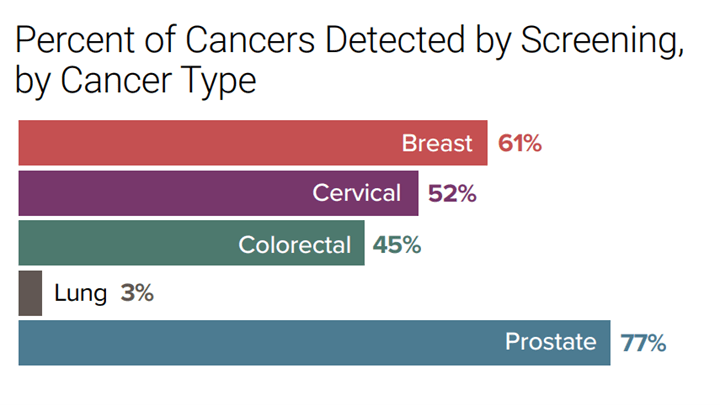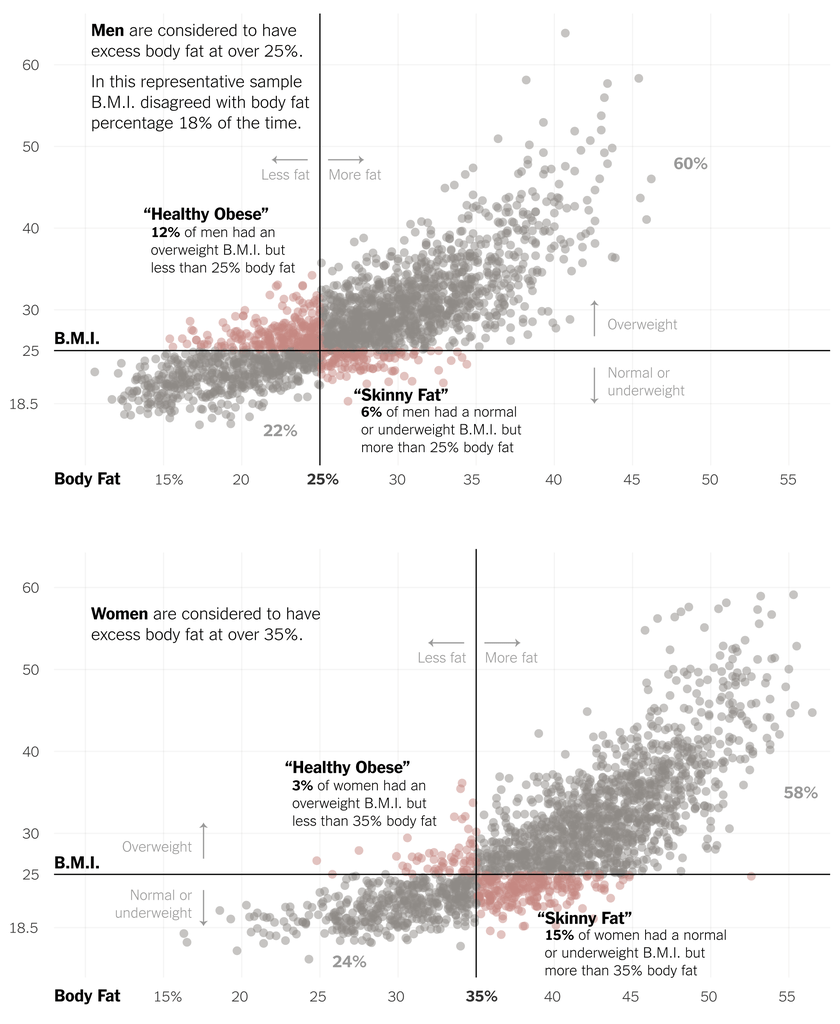Screening for cancer is largely accepted as the primary way to detect early signs of the disease, but recent research has revealed its lack of reliability and efficiency. In fact, only 14.1% of all diagnosed cancers in the US are detected by preventative screening tests. The majority of cases are instead detected when a person is experiencing symptoms or seeking medical attention for other reasons.
Additionally, the types of cancers that can be screened for are limited, with the US Preventative Services Task Force (USPSTF) recommending screening tests for only four types of cancer: breast, cervical, colorectal, and lung cancer. Even within these types, the detection rate through screening can vary greatly. For example, screening detects 61% of breast cancers, 52% of cervical cancers, 45% of colorectal cancers, and just 3% of lung cancers.

The USPSTF specifically recommends against screening for other cancers, including pancreatic, ovarian, thyroid, and testicular, as the potential harms of screening outweigh the benefits.
The Lack Of Screening Efficacy: Implications For Employers
Despite the ugly truths of its efficacy, many still believe that screening is an effective method of detection. Biometric screenings remain a major component of corporate wellness programs, with 50% of large companies offering them to their employees. However, these screenings often fall short of achieving their intended goals—accurately assessing individual risks, influencing healthy employee behaviors, and identifying chronic conditions at an early stage—due to their fundamental flaws:
- Body Mass Index (BMI) is a misleading measure of health, yet it is used to make objective determinations within a screening.

- The low reliability of biometric screenings limits the ability to detect conditions early enough to impact treatment trajectory, and very few exams result in a lifesaving story.
- It is intuitive to assume that “knowing their numbers” will motivate employees to adopt healthy habits, yet there is no empirical evidence to prove this.
- Annual physicals allow for the development of patient-physician relationships, whereas biometric screenings do not.
The resources organizations pour into providing screenings for employees is unnecessary, even wasteful. With companies predicted to spend $100 billion on employee wellness by 2030, it is more important than ever to ensure they implement professionally recommended, holistic solutions to make the most out of their budgets.
What Should Organizations Do Instead Of Biometric Screenings?
- Educate employees on preventive measures for health complications. The USPSTF recommends preventative treatment for certain types of cancer, such as counseling for skin cancer risk reduction and tobacco use. Organizations can provide employees with educational resources and counseling to inform them about practices that will lower their chances of disease and improve overall health.
- Implement a holistic wellness program. Studies have shown that a holistic approach, which includes promoting increased physical activity, nutritious eating, and stress management, can be effective in addressing a wide range of health concerns. By providing a workplace wellness program that encompasses all dimensions of wellness, organizations can help improve the overall health and well-being of their employees and make the most out of their investment in employee wellness.
- Take a personalized approach to individual needs. Sixty-eight percent of executives plan to customize their workplace wellness strategies to the individual needs of their employees in 2023 to appeal to an increasingly diverse workforce. For organizations who plan to continue including screenings in their programs, cancer screenings should be directed towards relevant age groups as recommended by the USPSTF:
- Breast Cancer: Women aged 50 to 74 years
- Cervical Cancer: Women aged 21 to 65 years
- Colorectal Cancer: Adults aged 45 to 75 years
- Lung Cancer: Adults aged 50 to 80 years who have a 20-pack/year smoking history and currently smoke or have quit within the past 15 years
Takeaway
In light of the growing evidence questioning the effectiveness of preventative screenings, organizations should carefully consider whether they should continue investing in them. The low detection rate of cancers and the limitations of biometric screenings suggest that there may be more cost-effective and accurate alternatives available.
One potential solution is to implement personalized wellness programs that combine a variety of educational and interactive methods to promote employee health and well-being. Such a comprehensive approach, rather than relying solely on screenings, can better address the diverse health needs of employees and be more beneficial for the organization in the long term.












